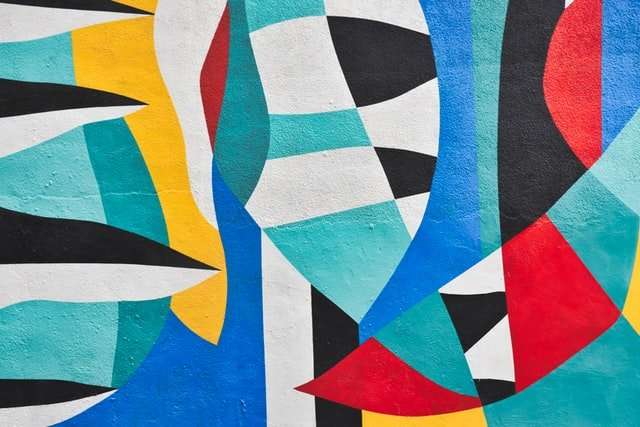One of the most important things to remember when you are painting impressionistically is that the sky takes up half of your picture. The way the clouds cover the sky can be the difference between a beautiful painting and a boring one. Find different ways to paint the sky, such as smudging, scribbling, and scratching.
The next thing you should know is that your brushstrokes should be visible but not too strong. If you are struggling with this technique, try keeping your brushstrokes away from the focal point.
While creating an impressionistic piece of artwork, think about what colors to use so that they blend seamlessly with each other. You want no harsh lines or colors that stick out like neon signs, for these will distract your viewers and ruin any appeal your art may have had.
Be sure to take your time in creating an impressionist painting, because if you rush through it, it will not turn out well at all.
Drawing is always a skill that takes time to master. If you want to be a great artist, you need to practice, practice and practice some more. You have to keep drawing, even if your drawings are not perfect. The real art of drawing comes from learning how to draw things the way they really look in the real world. You have to learn how to capture the lighting effects, shadows and perspective.
A lot of artists would tell you that it’s important to draw what you see in front of your eyes and not what you think you see. In other words, don’t draw what you imagine it looks like; draw what it actually looks like.
Here are some tips that will help you be a better impressionism artist:
1) Choose your subject matter wisely: It’s all about light! This is the most important tip there is for an impressionist artist. When choosing your subject matter, always chose something that has a strong light source coming from one side of the subject. This will give you the intense shadows needed for good impressionism art.
2) Use darker colors: You will need darker colors when practicing this style of art because everything needs to be shown in contrast with the dark background color behind it. I recommend using burnt sienna
I hope you enjoyed this post on impressionism art. If you have any questions please feel free to ask in the comments below!
I know that people are often wary of trying something new. Remember, don’t expect to be good at it right away. Just try and get better every time.
Thanks for reading!
In order to practice impressionism, you need a few basic supplies. The most important element is your paint. Artists use acrylics, oils and watercolors for their impressionism art. Acrylics are the most popular with beginners because they are more forgiving when you make mistakes. Oil paints are great for blending colors together, but you must wait until the previous layer dries completely before you move on to the next layer. Watercolors are very vibrant and colorful, but they are also very delicate and easy to smudge when mixing colors or if you’re not careful when touching up the painting later on. After choosing your paint, you’ll need something to mix it with. Water is usually used as a painting medium, since it makes it easier to blend colors together while the paint is still wet. If you’re using acrylics or oil paints, be sure that your water doesn’t contain any contaminants (if your tap water contains chlorine or fluoride, use bottled water instead). You’ll also need some brushes. Brushes come in a variety of shapes and sizes, depending on which technique you want to practice (brushes used for impressionism often have long handles).
For first-time artists, I recommend buying a kit that contains everything you’ll need: paint,
In order to make a good painting, you need to have a good combination of these two aspects. You can paint from imagination or memory. You can paint from photographs or other artist’s paintings. To know more about these aspects and many more, you can read the following article about impressionism art.
Having a professional artist as your instructor will help you learn how to paint in this style. However, you can also learn some of the techniques at home if you have the right kinds of art supplies and access to the internet.
TIP 1: Learn how to draw objects with multiple levels of focus in them.
Drawing landscapes is one of the easiest ways to practice this technique. The foreground, middleground, and background are all important areas to include in your landscape drawing. The foreground is where you depict the main subjects of your work, such as a house or tree. The middle ground area is for the objects that are more distant than the ones in the foreground but still identifiable, such as mountains and trees. And finally, the background is for things that are so far away that they are just a mass of color and cannot be identified as any certain object.
The concept of multiple levels of focus can also be applied to portrait drawings as well; for example, when drawing an eye, draw it so that you can see both its outline and its pupil clearly. This can also be applied to drawing hands.
TIP 2: Draw objects with a variety of value tones.
Value tones are what give an object its 3-dimensional appearance on paper;
“You know what impressionism is?” my friend asked, holding up a paintbrush. “It’s when you throw the paint around!”
Impressionism isn’t just a style of art—it’s an attitude. It’s an approach to life, too. I’ve always been impressed with the way impressionists handle their art and their lives. Painting is hard enough without having to deal with all the other stuff that comes with it, like finding models and dealing with critics. And yet impressionists somehow manage to make it all work. They’re fearless in their art and fearless in their lives.
Tossing paint is one of the ways they do it. Here are six tips on how to be an impressionist in your own work and your life:
1. Try something new. Take risks, but don’t be reckless about it. Sometimes you’ll get messy, but that’s okay—you’ll still be able to use some of the paint left on your brush.
2. Experiment with different techniques, whether you’re painting or writing or doing anything else that requires creativity and imagination. Figure out which techniques work best for you in any given situation and then use them again and again until they become second nature to you.
3. Have fun!


